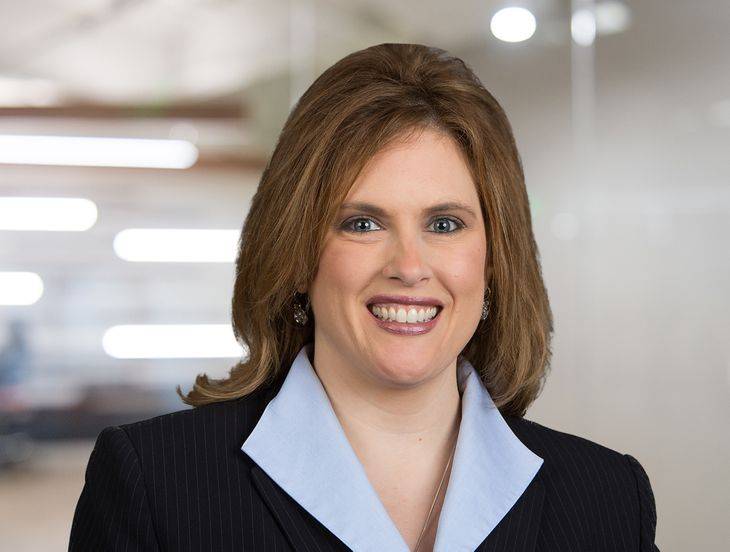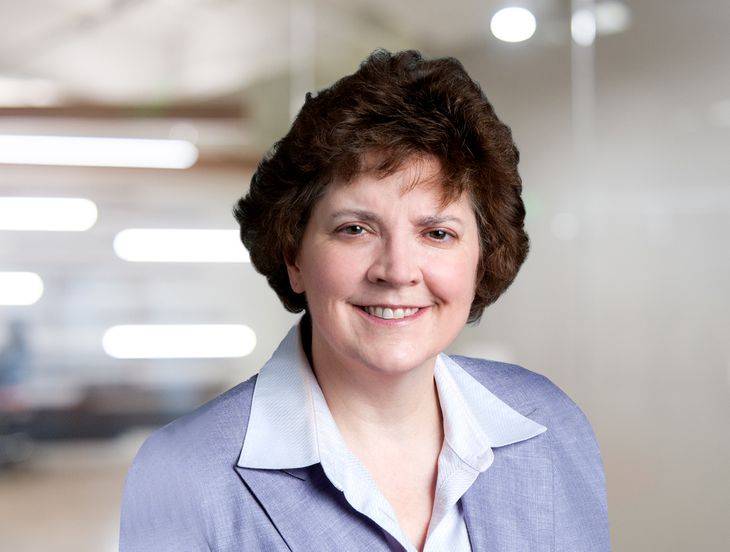Labor Department Revises COVID-19 Leave Regulations, Broadening Coverage For Healthcare Workers And Clarifying Other Employer Obligations
Insights
9.14.20
Employers of healthcare providers will soon be required to provide paid sick leave and partially paid family leave to a broader category of employees, and all employers subject to the law now have clarification on a number of other obligations, thanks to a revised set of regulations released by the Labor Department late Friday afternoon. After a federal court judge recently knocked down the agency’s first attempt to provide employers with practical direction in complying with the Families First Coronavirus Act (FFCRA), the Labor Department issued a second set of rules on September 11 that in some instances revise and in other instances clarify employer compliance duties. Here are the key changes and clarifications, which are slated to go into effect on September 16, that employers need to know about:
- The definition of workers deemed “health care providers” – whose employers may exclude them from coverage under the law – was narrowed to only include employees who are health care providers under the Family Medical Leave Act (FMLA) and those providing diagnostic services, preventive services, treatment services, or other services that are integrated with and necessary to the provision of patient care.
- The agency reaffirmed that leave can only be taken if the employee has work available from which to take leave.
- Employees must still obtain their employer’s approval to take leave on an intermittent basis.
- Employees must give their employer information to support their need for leave as soon as practicable.
- The Labor Department revised the rules to correct an inconsistency regarding when an employee may be required to give notice of family and medical leave to their employer.
Detailed Description Of Updated Regulations
Here is a more thorough description of each of the five areas addressed by the latest round of Labor Department regulations:
1. Health Care Provider Definition Narrowed
Because the FFCRA permits employers to exclude “health care providers” from the Act’s leave benefit provisions, the definition of that term is of critical importance. The DOL’s first attempt at painting the contours of that category of workers was quite expansive, excluding from FFCRA coverage “anyone employed at any doctor’s office, hospital, health care center, clinic, post-secondary educational institution offering health care instruction, medical school, local health department or agency, nursing facility, retirement facility, nursing home, home health care provider, any facility that performs laboratory or medical testing, pharmacy, or any similar institution, employer, or entity.” The DOL’s definition went on to include any individual employed by an entity that contracts with any of these institutions, as well as anyone employed by any entity that provides medical services, produces medical products, or is otherwise involved in the making of COVID-19 related medical supplies.
But this definition was too expansive for a New York federal court judge, who struck it down and claimed it went well beyond what the FFCRA should provide. To address his concerns, the agency revised and narrowed the exclusion to only include those individuals capable of providing health care services, which include “diagnostic services, preventive services, treatment services, or other services that are integrated with and necessary to the provision of patient care,” or otherwise meet the definition of the term found in the Family Medical Leave Act (FMLA). The FMLA definition includes “doctors of medicine or osteopathy” authorized to practice in their state or other medical professionals such as podiatrists, dentists, clinical psychologists, optometrists, many chiropractors, nurse practitioners, nurse midwives, clinical social workers, physician assistants, and other similar professionals. Under the new rule, employers may also elect to exempt nurses, nurse assistants, medical technicians, and laboratory technicians who process test results; they too are considered “health care providers.” Employers may also elect to exempt employees who perform the following types of services:
- Diagnostic services including, for example, taking or processing samples, performing or assisting in the performance of x-rays or other diagnostic tests or procedures, and interpreting;
- Preventative services including, for example, screenings, check-ups, and counseling to prevent illnesses, disease, or other health problems;
- Treatment services including, for example, performing surgery or other invasive or physical interventions, administering or providing prescribed medication, and providing or assisting in breathing treatments; and
- Other integrated and necessary services that, if not provided, would adversely affect the patient’s care includes, for example, employees who perform bathing, dressing, hand feeding, taking vital signs, setting up medical equipment for procedures, and transporting patients and samples.
On the other hand, the revised rule gives the following examples of employees who may not be excluded: information technology (IT) professionals, building maintenance staff, human resources personnel, cooks, food service workers, records managers, consultants, and billers. The revised rule states that while the services provided by these employees may be related to patient care — e.g., an IT professional may enable a hospital to maintain accurate patient records — they are too attenuated to be integrated and necessary components of patient care.
2. Work-Availability Requirement Reaffirmed
The DOL next reaffirmed its position on the work-availability requirement and further explained its reasoning behind the requirement. The DOL maintained that an employee may take FFCRA paid sick leave or expanded family and medical leave only if the employee has work from which to take leave and the FFCRA qualifying reason is a “but-for-cause” of the employee’s inability to work. The DOL also revised the rule to explicitly apply the work-availability requirement to all FFCRA qualifying reasons for leave.
The DOL explained that it interprets “leave” consistent with its long-standing interpretation of the same term as used in the FMLA, such that the time the employer’s business activity is closed, or the employee is not expected to work due to the closure, the time does not count against the employee’s FMLA leave entitlement. Additionally, the DOL noted that removal of the work-availability requirement would not serve one of the FFCRA’s purposes (i.e., discouraging employees who may be infected with COVID-19 to report to work) and may in fact likely lead to perverse results (e.g., a furloughed employee with a qualifying reason could receive pay potentially for several weeks, even after the employer closes its business and furloughs its employees). The reaffirmation of the work-availability requirement is a welcomed clarification for employers.
3. Intermittent Leave Still Requires Employer Consent
The Department reaffirmed that where intermittent leave is permitted by the FFCRA, an employee must still obtain their employer’s approval to take paid sick leave (EPSL) or expanded family and medical leave (EFMLA) intermittently, reasoning that this is consistent with longstanding FMLA principles. It noted that Congress said nothing about intermittent leave when it passed the FFCRA. The agency noted that Congress instead granted the Department broad regulatory authority to effectuate the purposes of and ensure consistency between the EPSL and EFMLA.
FMLA leave already requires a medical need or an agreement between the employer and employee before an employee may take intermittent leave. Specifically, (1) a medical need for intermittent leave taken due to the employee’s or a family member’s serious health condition, which the employer may require to be certified by a health care provider; (2) employer approval for intermittent leave taken to care for a healthy newborn or adopted child; or (3) a qualifying exigency related to service in the Armed Forces.
The Department expressly created a regulation that permits an employee to take FFCRA leave on an intermittent basis only when taking leave to care for their child whose school, place of care, or child care provider is closed or unavailable due to COVID-19. This is contingent upon the employer’s consent. The Department confirmed this remains the case.
As for the other reasons for utilizing paid sick leave, unrestricted intermittent leave would be inconsistent with the purposes of slowing the transmission of COVID-19, the agency said. For example, leave for an employee who is ill, directed to quarantine, or is caring for someone who is ill requires a continuous period of time away from the workplace to prevent the spread of the disease. Coming to the worksite intermittently would frustrate that purpose. On the other hand, a job that lends itself to telework may be able to accommodate intermittent leave – but only with employer consent. Even under the FMLA, foreseeable intermittent leave should not unduly disrupt the employer’s operations, lending further support to the need for employer approval in certain instances.
4. Employee Documentation Timing Clarified
The Department’s original regulations required employees to provide their employers with supporting documentation for FFCRA leave. This documentation generally includes: (1) the employee’s name; (2) the dates for which leave is requested; (3) the qualifying reason for leave; and (4) an oral or written statement that the employee is unable to work. For certain qualifying reasons, additional documentation is required.
While the Department maintained these documentation requirements, it amended its regulations to clarify the timing for employees to provide this information to their employers. Previously, this section of the Department’s regulations stated that such documentation must be provided “prior to” taking leave under FFCRA. As described in the recent New York federal judge’s decision, there was an inconsistency regarding the timing in the documentation and notice requirements for FFCRA leave.
Due to this inconsistency, the Department clarified that the documentation in support of FFCRA leave need not be provided prior to taking leave under FFCRA, but rather should be provided “as soon as practicable.” The Department noted that, in most cases, “as soon as practicable” will be when the employee provides notice under the amended section described below. For this reason, employers should be careful not to require supporting documentation as a precondition to providing FFCRA leave and should provide employees a reasonable opportunity to provide the required documentation.
5. Notice Requirement Revised To Address Inconsistency
The DOL’s final revisions to the EPSL and EFMLA regulations resolve an inconsistency addressing when an employee may be required to give notice under the EFMLA and an inconsistency between notice requirements and the timing of documentation requirements.
The original language of the regulations stated that employers could not require advance notice of the need for EPSL or EFMA. Rather, for both, notice could be required only after (or on) the first day of leave taken. The DOL revised the regulation so that the “only after” language applies solely to EPSL. It then added that to take EFMLA, an employee must provide notice as soon as practicable, which is before the first day leave begins if the need for EFMLA is foreseeable.
What’s Next For Employers
It is quite possible that the same parties that challenged the initial version of these rules – including the state of New York – will once again file a legal challenge attacking this second set of rules. However, it is uncertain whether any such challenge would be successful, and therefore employers need to proceed as if these set of rules – which officially go into effect on September 16 – are the new law of the land.
It is most critical for employers in the healthcare industry to adapt to these changes. No longer can you exclude a wide swath of workers from FFCRA coverage, and instead must narrowly tailor any exclusion you implement to only cover a smaller set of employees more closely associated with the performance of health care work. We recommend you connect with your Fisher Phillips attorney or any member of our Healthcare Industry Practice Group to ensure you are applying the new exclusion correctly.
Fisher Phillips will continue to monitor the rapidly developing COVID-19 situation and provide updates as appropriate – especially as it relates to responses to this ruling. Make sure you are subscribed to Fisher Phillips’ Alert System to get the most up-to-date information. For further information, contact your Fisher Phillips attorney or any member of our Post-Pandemic Strategy Group Roster.
This Legal Alert provides an overview of a specific developing situation. It is not intended to be, and should not be construed as, legal advice for any particular fact situation.
Related People
-
- Michelle I. Anderson
- Partner
-
- Myra K. Creighton
- Partner
-
- Hannah Sweiss
- Partner
-
- A. Kevin Troutman
- Senior Counsel



